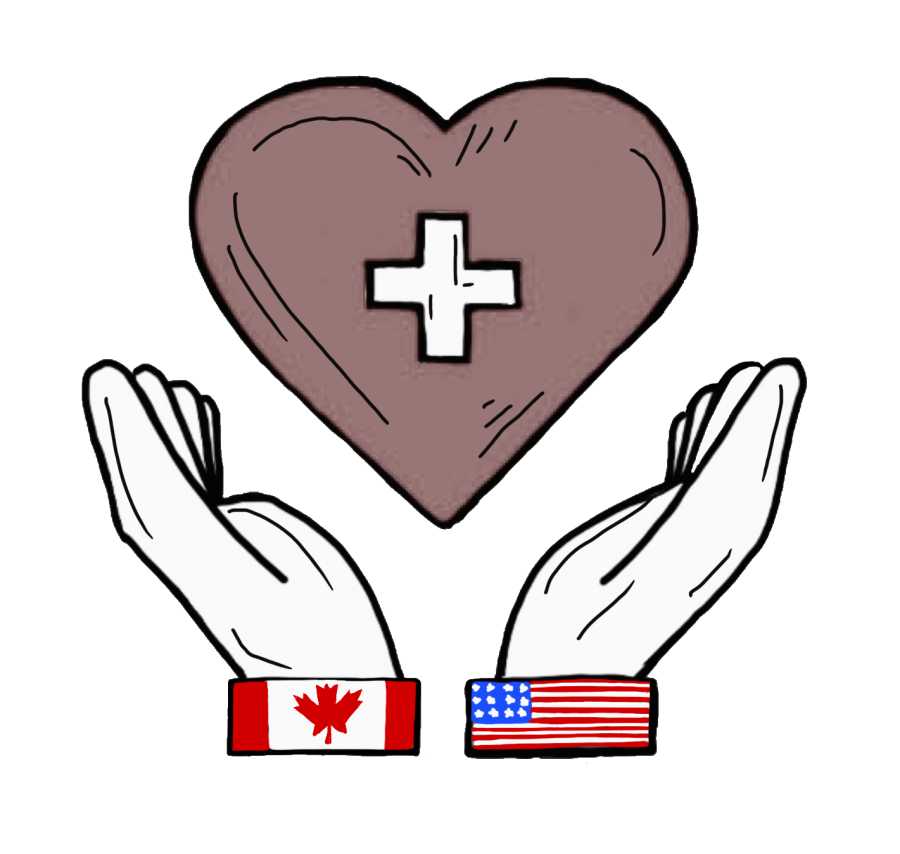The Crumbling Ideal of Canadian Healthcare
Americans disenchanted with their nation’s inaccessible healthcare system frequently point to Canada’s system as a poster child, but any Canadian can tell you that our reality is far from ideal.
Even before COVID-19, we had grown accustomed to norms that would perplex many insured Americans. A trip to the emergency room could result in an all-night wait if your life didn’t appear to be in immediate danger. You could call every family doctor in your city and find that none of them accepted new patients. As the National Post notes, five million Canadians, or nearly one-eighth of the population, do not currently have a family doctor. Having recently aged out of my pediatrician, I count myself in this group. Mix in our markedly long surgery wait times and it’s easy to see why a lot of Canada’s patients are unhappy.
Although it’s undeniable that the COVID-19 pandemic has propelled these conditions to the worst extremes, their root causes have long been in place. Forbes reported that in 2013, the average wait time for a medically-necessary procedure after a generalist’s referral was four and a half months long, two times longer than it was in 1993. In 2006, Fraser Institute fellow Nadeem Esmail highlighted how Canada’s physician-to-population ratio was already standing at a dismal 26th out of 28 countries with universal healthcare, with these figures set to worsen in coming years. This was due mainly to governmental restrictions on physician training and a significant portion of the workforce being at retirement age. Meanwhile, high overhead, unattractive compensation and stressful hours are factors deterring new graduates from pursuing family medicine over more stable jobs in clinics or specialist’s offices.
Flash forward to the current decade, and issues of wait times and staffing have become disastrous. In 2022, emergency rooms across the nation saw a rampant number of closures, especially burdening Canadians living in rural areas. According to the Toronto Star, at least 86 closures occurred in Ontario alone between July and September of this year. As The New York Times writes, this stems from a nationwide shortage of nurses, many of whom have been pushed to their limits by unsafe working conditions, low wages and pandemic burnout.
As the fallout from this healthcare lag becomes increasingly apparent, more critics are vocalizing a desire for increased privatization within Canada’s system. Among the provinces most eager to comply is Québec, where according to CBC, leading political parties are actively proposing to expand the province’s private healthcare network. Costs for patients at the planned centers will be covered through public health insurance while being privately owned and operated. Though there may be opponents who feel as if this shatters our national identity of completely “free” care, Canada’s refusal to embrace private options sets it apart from peer nations in a way that isn’t necessarily good.
In an op-ed for the National Post, Tristin Hopper highlights the two-tiered system in countries like the United Kingdom, Germany, Australia and Norway, where free public and paid private care are both options. In Canada, there is seldom a private alternative for patients awaiting publicly-funded care. As Bacchus Barua of the Fraser Institute noted in 2017, a health policy survey conducted by the Commonwealth Fund of adults in Australia, Canada, France, Germany, the Netherlands, New Zealand, Norway, Sweden, Switzerland, the United Kingdom and the United States saw Canada rank last in many vital metrics. These included the ability to get a same- or next-day appointment when sick and waits for ER treatment, specialists and elective surgeries. Conversely, the countries that came out on top all managed to successfully integrate the private sector into their universal healthcare systems.
It’s imperative that we abandon polarized misconceptions about Canadian healthcare relative to that of the United States and accept that “private” is not always a cruel word. There is no value in Canada maintaining a completely public system if it inflicts this much hardship on its population. Ultimately, policymakers in both countries should be prioritizing access and quality of care, while placing less emphasis on arbitrary labels. Though Canada’s proximity to the U.S. makes it an easy scapegoat, the real models exist on the other side of the globe, and our nations on both sides of the border have an immeasurable amount of work to do.

Emma Barrison is a senior from Watchung, NJ concentrating in studio art with a minor in museum studies. She has previously served as a Graphic Designer....











